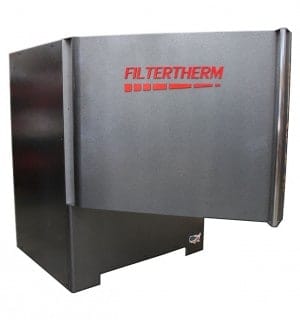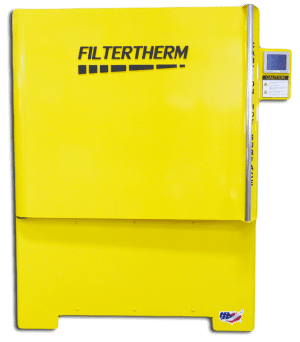A holistic approach needs to be taken when considering care of your DPF system. Take a look at the truck’s overall health when considering proper care for your DPF.


A Diesel Particulate Filter (DPF) is your vehicle’s defense against releasing Diesel Particulate Matter into the atmosphere and contributing to airborne pollutants. These filters although seemingly robust, they need to be treated with care and have proper maintenance performed routinely, similar to the rest of your vehicle’s operating system. Everything upstream of your filter system (injectors, oil, air filters and fuel filters, etc.) has the ability to negatively affect the efficiency of the DPF. The two biggest factors to ensure the longevity and effectiveness of your DPF is following the vehicle manufacturer’s maintenance guidelines, and cleaning your filter using the proper equipment and methods that have been established by the filter manufacturer.
A Holistic Approach
A holistic approach needs to be taken when considering care of your DPF system, meaning you need to look at the truck’s overall health when considering proper care for your DPF. Here are a few items to think about when it comes to engine issues in relationship to DPF plugging:
- Air filters need to be inspected and replaced at the recommended intervals. A dirty air filter can lead to less air to the engine, and when the air-fuel ratio is not correct for the engine the result is improper combustion in the cylinders. This can cause filter plugging downstream.
- Worn fuel injectors cause engines to run rough, lose fuel economy and lead to improper combustion, which can cause filter plugging.
- Your vehicle’s turbo charger and charge air cooler need to be checked for proper operation as well. Turbochargers that do not produce sufficient air or have leaking seals, can lead to oil and soot generation in the exhaust system, potentially damaging the DPF.
- When your DPF regenerates, it deoxidizes the particulate matter, and the exhaust pressure pushes the ash to the end of the filter. Using the correct type of engine oil and monitoring your vehicle’s oil consumption is critical as well. An approved CJ-4 rated oil is recommended due to its low ash generating properties for any vehicle with a DPF. If your vehicle is using excessive oil it needs to be diagnosed to prevent possible damage to both your engine and your DPF system.
Proper engine maintenance is key to keep a DPF operating correctly. After any engine repair your DPF should always be cleaned by a trained technician using proper equipment and methods.
Pulse, Bake, Pulse
Since the introduction of DPF systems there has been a need to efficiently and properly clean DPFs. Everything from steam cleaning to beating on the side of the filter housing has been tried by people to shortcut the cleaning process, this will result in damage or possible destruction of the filter. The best practice industry-wide, and manufacturer-approved cleaning method to keep a filter in warranty, is the “Pulse, Bake, Pulse” method. During the “Pulse” part of a cleaning cycle, compressed air is used to blow out the cells inside the filter housing, and will also provide a basic evaluation of loose particulate matter before moving to the baking cycle. Some companies try to shortcut cleanings and will only perform this phase or a similar air only approach to the cleaning due to needing a quick turnaround time. Evidence shows that this is not a sufficient method to clean your DPF.
The second phase of the cleaning cycle is known as “baking.” A thermal oven must be used to achieve this critical part of the cleaning process. During the baking cycle a filter is brought up to a specified temperature over a specified period of time, also known as a ramp rate. This allows the filter to de-oxidize the particulate matter that is inside the cells and cell walls that could not be removed with air alone. The ramp rate differs from filter to filter, as well as manufacturer to manufacturer, so it is imperative that your cleaning service provider has a trained technician that uses a controlled ramp rate specific to your individual filter. FilterTherm™ Thermal Ovens have an industry first Smart Touchscreen that is pre-programmed with these ramp rates to help prevent accidental overheating of your filter, which could lead to damage or degradation to the filter.
Once your filter has been properly heated and cooled it must be pulsed again, removing the remaining ash. Your cleaning service should be taking pre and post pictures of your filter, pre-and post-weights, as well as pre- and post-flow readings to demonstrate that your filter was actually cleaned properly. The pictures can aid in the case of a warranty issue, or in the event of a technician damaging the filter during the cleaning process. Your cleaning service should be able to provide you with your filters cleaning history upon request in a digital format, ask your cleaning service about their training programs, equipment used, and familiarity with your specific filter before trusting them with servicing your DPF system.
Diesel Emissions Service (Redding, CA) is a retrofit and re-power specialist serving all of North America. They can assist you in data-logging, retrofitting, filter maintenance, OEM DPF replacements and DPF cleaning equipment. Diesel Emissions Service has six locations and mobile teams to serve you. The DES Service Partner Network will be debuting soon, which will add DES trained DPF cleaning and sales locations across North America. For more information about the DES Service Network, contact Mike Callaway at [email protected]. For more information on DPF cleaning equipment or replacement DPFs, call Diesel Emissions Service at (888) 792-2922 or visit www.DES.DIRECT
